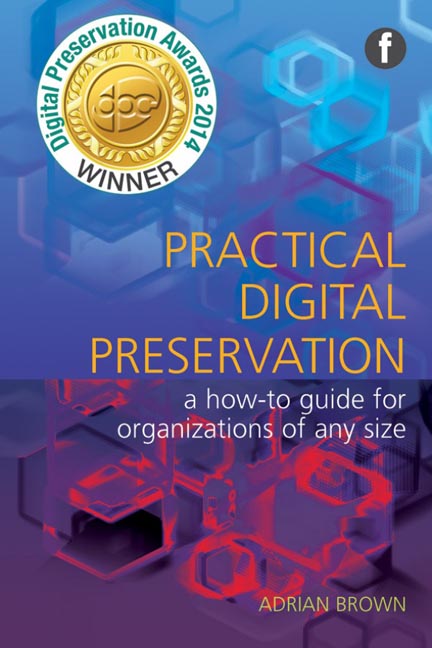Book contents
- Frontmatter
- Contents
- Acknowledgements
- Glossary
- 1 Introduction
- 2 Making the case for digital preservation
- 3 Understanding your requirements
- 4 Models for implementing a digital preservation service
- 5 Selecting and acquiring digital objects
- 6 Accessioning and ingesting digital objects
- 7 Describing digital objects
- 8 Preserving digital objects
- 9 Providing access to users
- 10 Future trends
- Appendices
- Bibliography
- Index
3 - Understanding your requirements
Published online by Cambridge University Press: 08 June 2018
- Frontmatter
- Contents
- Acknowledgements
- Glossary
- 1 Introduction
- 2 Making the case for digital preservation
- 3 Understanding your requirements
- 4 Models for implementing a digital preservation service
- 5 Selecting and acquiring digital objects
- 6 Accessioning and ingesting digital objects
- 7 Describing digital objects
- 8 Preserving digital objects
- 9 Providing access to users
- 10 Future trends
- Appendices
- Bibliography
- Index
Summary
Introduction
This chapter provides guidance on how to identify and understand your requirements for digital preservation services, from high-level needs to the detailed documentation necessary to enable systems to be developed or procured.
The importance of understanding your requirements as a precursor to implementing any kind of solution cannot be overstated. To omit this step should be as unthinkable as attempting to build a house without detailed architectural plans. Taking the time to do this properly will improve the quality of the end result. This is even more critical for smaller organizations with limited resources, where maximizing value for money is vital; understanding what matters most ensures that those resources can be invested to achieve the greatest possible impact.
This chapter begins by examining how to develop a set of requirements, including identifying and engaging with everyone who can and should contribute, modelling business processes, and drawing on existing work. It then considers how requirements should be articulated and documented, and the types of requirement that need to be considered. Finally, it looks at how the resulting requirements can be applied in practice, as a basis for developing actual systems and services.
Identifying stakeholders
An organization's requirements for digital preservation will not derive from any individual or single group; a wide variety of parties will have an interest. These may be key individuals, or those representing the interests of wider groups with whom it is not possible to engage directly. They may also be decision makers, who need ultimately to authorize the adoption of those requirements as a basis for implementation. Identifying these various stakeholders, and what role they need to play, is therefore an essential first step in understanding one's requirements. They will, of course, vary considerably from case to case, but a number of common categories of stakeholder should be considered:
• Content creators and managers: The people who actually create or manage the content to preserve are clearly an essential group. These may be internal staff or external depositors and publishers, and this distinction will be a major factor in determining by what means, and indeed to what extent, they can be identified in advance and consulted. Understanding the nature of the content that needs to be preserved and the processes by which it is managed prior to archiving is essential to inform the design of any solution.
- Type
- Chapter
- Information
- Practical Digital PreservationA how-to guide for organizations of any size, pp. 47 - 62Publisher: FacetPrint publication year: 2013
- 1
- Cited by



